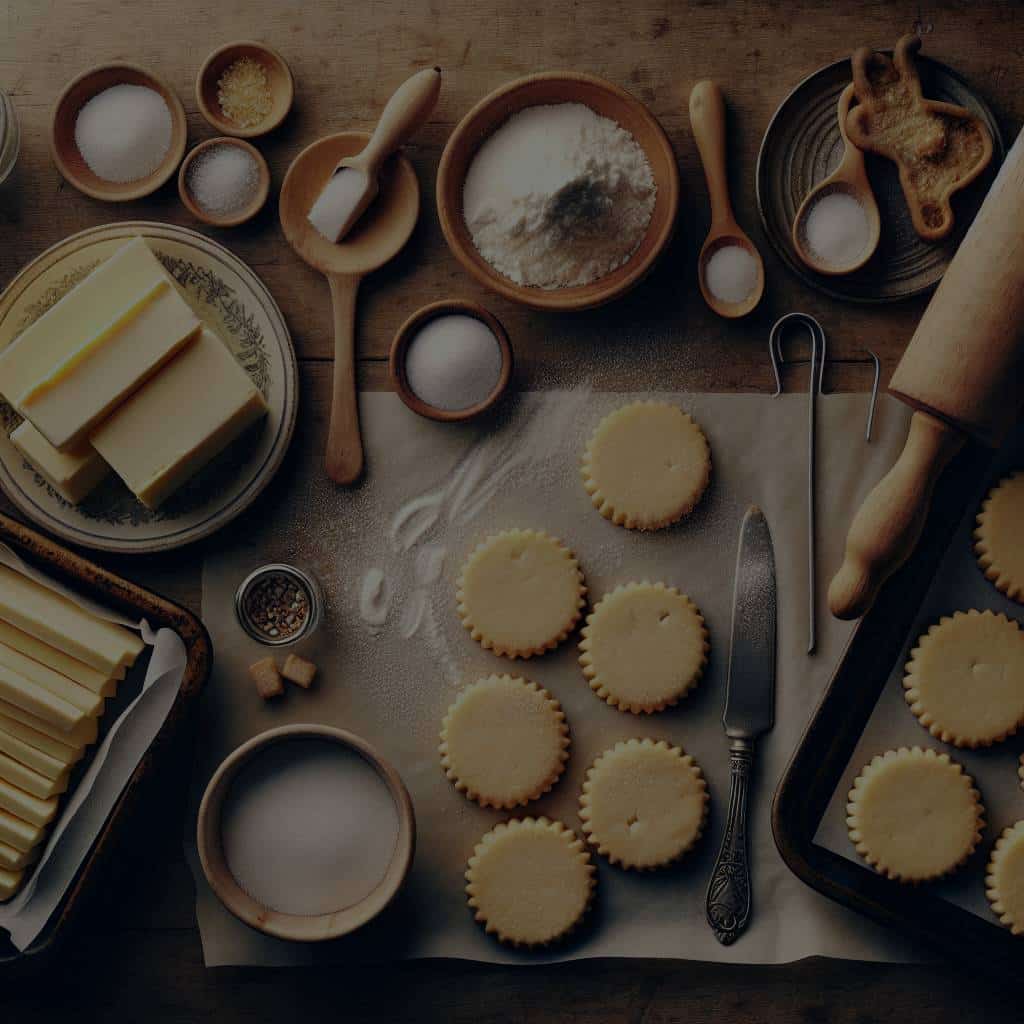What Techniques Can Result in a Crisp, Buttery Scottish Shortbread?

Ah, shortbread. The mention of this classic Scottish cookie might transport you to a cozy café, where the crumbly delight melts in your mouth, leaving a buttery aftertaste. But what if we told you that you could recreate this culinary pleasure in your own kitchen, complete with that distinct shortbread texture and flavor?
It’s all about the ingredients, the recipe, the dough, and the baking techniques. Let’s delve into the world of shortbread and discover how to make this beloved Scottish treat at home.
A lire en complément : Can You Bake an Authentic English Victoria Sponge Cake with a Fresh Berry Compote?
The Key Ingredients
Before we delve into the actual process of making shortbread, it’s crucial to understand the role of each of the ingredients. Shortbread might seem like a simple cookie, but each of its four main components- butter, sugar, flour, and salt- plays a significant role in creating its unique texture and flavor.
Let’s start with the star of the show- butter. It’s responsible for the rich, creamy flavor, and flaky texture of shortbread. Using high-quality, unsalted butter will result in the best taste. The butter should be at room temperature before you start mixing it with the other ingredients.
Sujet a lire : What’s the Best Way to Make Authentic British Scones with Clotted Cream?
Next up is sugar. We recommend using fine granulated sugar as it blends well with the butter, creating a smooth dough. Powdered sugar or brown sugar could alter the texture of the cookies.
Flour is the backbone of this recipe. It provides the structure and body to the cookies. For a traditional Scottish shortbread, use all-purpose flour.
Finally, a pinch of salt enhances the sweetness of the cookies and balances the richness of the butter. It’s a small but indispensable ingredient in this recipe.
A Classic Scottish Shortbread Recipe
Now that we’ve understood the significance of each ingredient, let’s get baking! This classic Scottish shortbread recipe is straightforward and doesn’t require any fancy equipment. Here’s what you’ll need:
- 1 cup unsalted butter, at room temperature
- ¾ cup granulated sugar
- 2 cups all-purpose flour
- A pinch of salt
These measurements will yield approximately 16 cookies.
First, preheat your oven to 350°F (175°C) and line a baking tray with parchment paper. In a large bowl, cream together the butter and sugar until it’s smooth and creamy – this will take a few minutes. Then, gradually add the flour and salt, stirring until the dough comes together.
Next, gather the dough into a ball and transfer it to a lightly floured surface. Gently knead the dough for a few minutes until it’s smooth, then roll it out to a thickness of 1/2 inch. Cut out cookies using a cookie cutter of your choice, then place them on your prepared baking tray.
The Perfect Baking Technique
The baking technique is crucial in achieving the perfect crumbly texture of shortbread. Here are a few tips to help you get it right.
Firstly, do not overwork the dough. Overmixing can result in a tough, dense cookie instead of a light and crumbly one. The dough should just come together, and it’s okay if it looks a bit crumbly.
Secondly, chill the cut-out cookies in the refrigerator for at least 15 minutes before baking. This step helps the cookies to retain their shape while baking.
Next, bake the cookies in the preheated oven for about 20-25 minutes, or until they are lightly golden around the edges. Remember, shortbread cookies should not be too browned; a light golden color is perfect.
Finally, allow the cookies to cool on the baking tray for a few minutes before transferring them to a wire rack to cool completely. This resting period helps the cookies to firm up and develop their signature flaky texture.
Variations on the Traditional Recipe
Even though the traditional Scottish shortbread recipe is delightful as is, you can add a personal twist to it. You could add some finely chopped chocolate to the dough for a sweet surprise. Alternatively, you could dip half the cooled cookie in melted chocolate for a gourmet touch.
A hint of citrus can also do wonders to the shortbread. Grate some lemon or orange zest into the dough for a fresh, tangy flavor. Similarly, adding a dash of vanilla extract or almond extract can elevate the cookies.
Another variation could be adding finely chopped nuts to the dough. Almonds, pistachios, or pecans would add a pleasant crunch to the cookies. You could even sprinkle some sea salt on top of the cookies before baking for a sweet and salty treat.
In summary, making the perfect Scottish shortbread is all about choosing the right ingredients and using the correct baking techniques. Whether you stick to the traditional recipe or add your own twist, we’re certain that you’ll savor every bite of these crisp, buttery cookies.
Incorporating Different Types of Flour
Another aspect that may significantly impact the outcome of your shortbread cookies is the type of flour used. Although all-purpose flour is the standard, you can experiment with other varieties to create different textures and flavors.
One noteworthy alternative is rice flour. Substituting a quarter of your all-purpose flour with rice flour can result in a shortbread that is even more crumbly and tender. It may also give your cookies a slight nutty flavor, enhancing the overall taste.
Whole wheat flour, on the other hand, can add a rich, nutty flavor but may make your shortbread a bit more dense and less delicate. You may want to combine it with all-purpose or rice flour to get the best of both worlds.
Remember, when experimenting with different flours, always keep an eye on your dough. Adjust the quantities of other ingredients if necessary to ensure that the dough is not too dry or too wet. The key is to achieve a dough that is just right- not too sticky, not too crumbly.
Storing Your Shortbread
After enjoying your homemade Scottish shortbread, you might wonder how to store the remaining cookies to preserve their freshness. Proper storage is essential to keep your cookies crisp and delicious.
Let the cookies cool completely on a wire rack before storing. Once cooled, transfer them to an airtight container. If you need to stack them, place a sheet of parchment paper between each layer to prevent them from sticking together.
Store the airtight container in a cool, dry place. Your shortbread cookies should retain their freshness for up to a week. If you wish to keep them for a longer period, you could freeze them. Wrap individual cookies in plastic wrap, then place them in a ziplock bag before freezing. When you’re ready to consume, simply thaw them at room temperature.
Conclusion
In conclusion, recreating the authentic Scottish shortbread at home is an attainable culinary endeavor. It all starts with understanding the significance of each ingredient—butter, sugar, flour, and salt. Then, follow a classic shortbread recipe, paying attention to your dough and adopting the perfect baking technique. You can even take it a step further by incorporating different types of flour or trying variations on the traditional recipe.
Storing your shortbread wisely will ensure that you can savor these buttery, crisp cookies even days after baking. Whether you share them with loved ones or enjoy them in the comfort of your own home, Scottish shortbread is a timeless treat that never disappoints. So, roll up your sleeves, turn on your oven, and embark on the rewarding journey of making your very own shortbread cookies. Happy baking!
